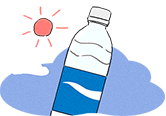First aid for heat disorders
There are various signs and symptoms to look out for that may indicate a heat disorder. Take appropriate countermeasures immediately if you notice initial symptoms such as dizziness or lightheadedness. As heat disorders can be life-threatening, it is important to be aware of what to look out for and to follow the steps outlined below if a heat disorder is suspected.
When heat strokes occur, it is necessary to take appropriate first aid measures. However if even one of the following conditions is observed, get medical attention immediately.
- The person is not conscious
- The person cannot consume fluids (water and sodium) on their own.
- The symptoms do not improve even after consuming fluid etc
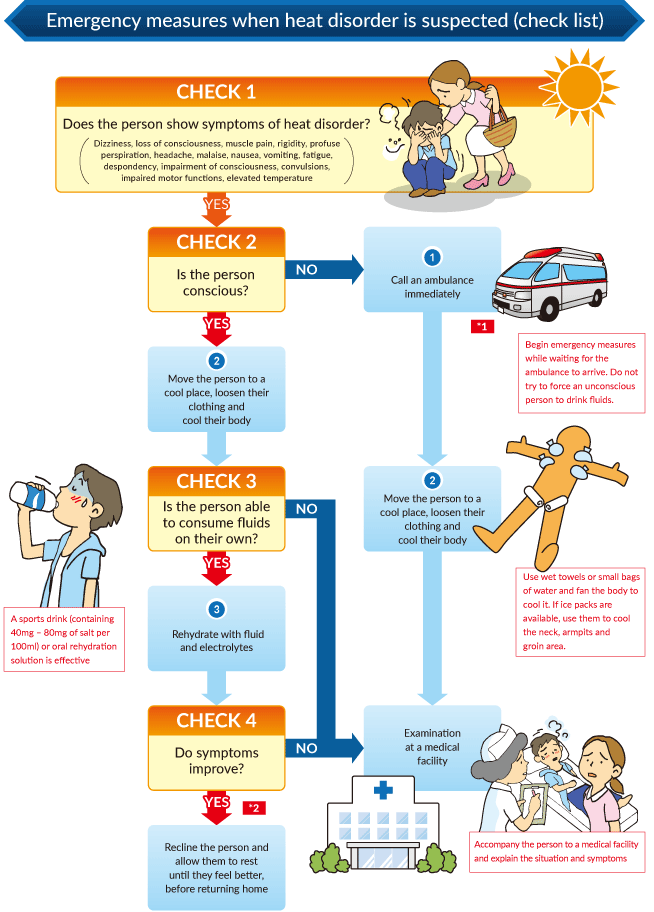
- *1The person must be taken to a medical facility if their body temperature is high, if he or she is unable to consume fluids or electrolytes (saline solution) on their own, or if symptoms worsen or fail to improve. Even in the absence of clear symptoms, call an ambulance immediately if the person shows slowed reactions, impaired speech or movement.
- *2If heat exhaustion or heat stroke is suspected (see Types of heat disorders), examination at a medical facility is recommended as the person's condition may change suddenly even after symptoms improve.
- 1Confirm the symptoms
-
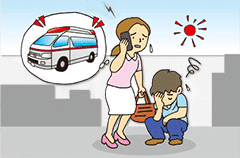
Appropriate measures should be taken when a heat disorder is suspected. If the person is unconscious or shows impaired consciousness it is important to call an ambulance immediately. Emergency measures must be taken to cool the person while waiting for the ambulance to arrive.
- 2On-site emergency measures
-
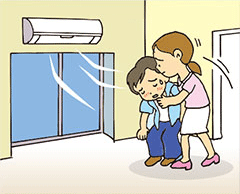
Immediate on-site emergency measures should be implemented, whether an ambulance is called or not. If a heat disorder is suspected, the person should be moved to a cool place, cooled, and rehydrated with fluids and electrolytes, regardless of the severity of symptoms.
- *Fluids should only be given if the person is capable of consuming them on their own.
Move the person to a cool place
Move the person to a shaded place with good air circulation or to an air-conditioned room.
Cool the person's body
- Remove or loosen tight clothing to let heat escape.
- Dampen exposed skin with cold water and use a paper or electric fan to cool the body.
- If ice packs are available, use them to cool areas with large blood vessels near the surface of the skin, such as the neck, under the arms and the groin area.
- 3Rehydrate with fluids and electrolytes
-
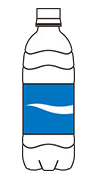
If the person is conscious, have them consume a cold beverage containing an appropriate amount of electrolytes.
- A sports drink (containing 40mg - 80mg of salt per 100ml) or oral rehydration solution that can replenish electrolytes lost through perspiration is recommended.
- If the person does not respond to stimuli or shows signs of impaired consciousness, do not force them to drink, as fluid could enter the respiratory tract. If the person is nauseous or vomiting, fluids should be given intravenously at a medical facility.
Source: Health Care Manual for Heatstroke, Ministry of the Environment (partially modified)






